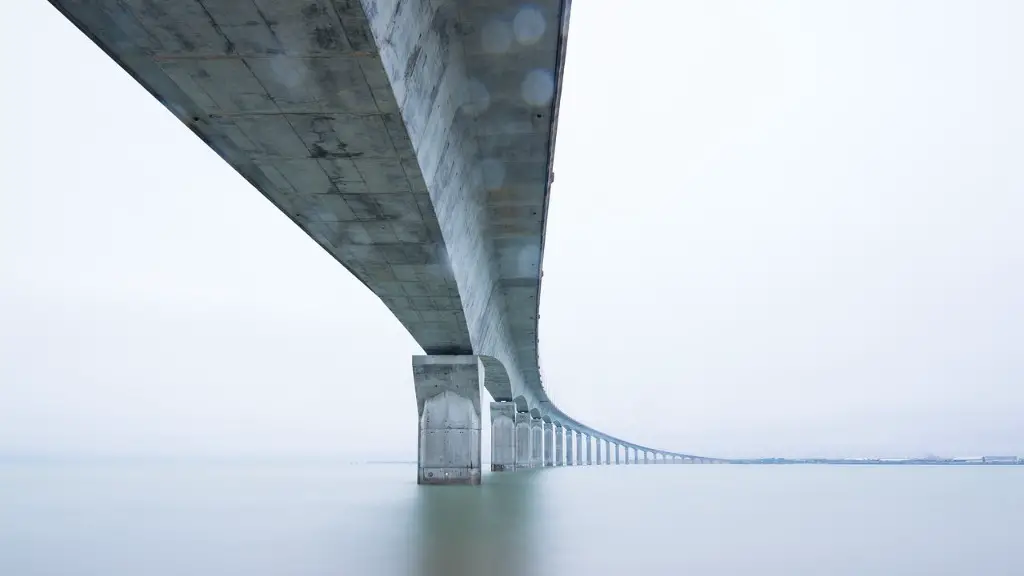What is AR in Architecture?
Augmented reality (AR) is the integration of digital information with the user’s environment in real time. In architecture, it has the potential to revolutionize building design, creating virtual models and streamlining the design process. AR has the potential to give architects and engineers the power to design, preview, and explore complex systems in three dimensions with accuracy and efficiency. It has the potential to drastically reduce costs and timelines associated with traditional architectural workflows.
For the architecture user, AR provides a much more tactile, immersive experience than the traditional 2D plan or a 3D visualization. Architects and engineers can see their designs come to life via AR in an interactive, dynamic environment. They can simulate walking through a virtual building and actually see different design elements from every angle – as well as make adjustments as needed.
AR also offers novel opportunities for collaboration in architecture. Different team members can work together on the same project not just from different areas, but simultaneously from different parts of the world. The technology allows for instantaneous design updates, so everyone has access to the most up-to-date information. Through the use of gesture-based applications, it is also easier to communicate ideas to remote teams, allowing for more effective teamwork.
By making use of AR, architects and engineers have the potential to achieve levels of creativity and accuracy unmatched by traditional methods. AR also gives architects and engineers the ability to communicate their designs with greater clarity to clients and other stakeholders. The potential of VR technology in the fields of architecture, engineering, and design should not be underestimated
The integration of augmented reality into architecture is revolutionizing the design process. With augmented reality architects and engineers can create 3D models of buildings and be take “tours” of them in virtual reality. This allows for faster design verification and speedier project approvals. Furthermore, AR provides the power to create realistic “walkthroughs” of buildings and allow architects and engineers to understand how physical space that can help to better inform design decisions.
For example, it can help to pinpoint areas where additional natural light is required to make sure it doesn’t interfere with other elements. This can help architects to make better-informed decisions faster, resulting in a more effective use of time and budget. Furthermore, building walkthroughs can aid in the sales process, as potential buyers can take immersive tours through the physical space of a building before it even has been built.
One of the most exciting aspects of building walkthroughs is that they’re not limited to physical buildings. Architects and engineers have the potential to provide virtual insights into a building before construction begins, allowing users to take a closer look at design elements and envisioning how the physical space will look and feel after the project is completed.
In addition to aiding in the building design process, augmented reality is also helping to create realistic representations of existing buildings. With the ability to create 3D scans of existing buildings, users can create accurate models for use in further design explorations.
Construction, remodeling and real estate
The introduction of AR also has implications for how construction projects will be designed and executed. AR enables architects and engineers to collaborate remotely, collaborating and troubleshooting design issues before they become costly construction problems. Furthermore, AR provides the tools to inspect the physical construction process, improve safety and reduce costly rework.
Finally, AR can be greatly beneficial in the realm of real estate. As discussed earlier, potential buyers can use augmented reality to view the physical layout of a house or apartment before it has even been built. Furthermore, property owners can gain an immersive understanding of their existing spaces, aiding in the decision making process when it comes to remodelling, furnishing, and other projects.
Property appraisers can also use augmented reality to create realistic and accurate assessments of a building before purchase. By further leveraging AR tools, property owners and even real estate brokers can share walkthroughs of buildings, allowing them to gain a greater understanding of potential buyers and their needs.
Creating more data centric workflows
With Augmented Reality, architects and engineers can enhance their workflows and become more data centric. With the ability to collect, process and analyze data, it can become easier to create simulations, optimize designs and streamline the working process. AR offers tremendous potential to drastically increase the speed and accuracy of simulations and data analysis.
By leveraging machine learning and artificial intelligence, AR can also help to create more affordable and sustainable designs. AI can help architects and engineers understand the impacts of their design decisions on the environment and suggest necessary alterations. With AIs capacity to perceive patterns, it can help create improved security, better energy efficiency and more efficient resource usage.
However, it is important to note that no matter how advanced AI gets, the decisions that are made will ultimately be left up to the architects and engineers themselves. Ultimately, it is up to individual practitioners to exercise discretion in developing unique and creative solutions to architectural problems.
AR beyond the traditional architecture workflow
The use of augmented reality in architecture is not limited to the traditional workflow. AR can be used to give architects and engineers a new level of insight into their buildings and designs. For example, AR is being used to bridge the gap between physical and digital models. AR allows users to layer digital data onto objects in the real world, giving them the ability to determine how a space can be used more efficiently.
In addition to virtual models, AR can also be used to develop interactive elements in physical spaces. Different types of media, including menus, videos, and images, can be easily integrated into existing physical spaces via AR. This can not only help to add vibrancy to physical spaces, but also help to educate visitors about architecture and design.
Finally, AR can also be used to develop new educational experiences related to architecture. Through interactive tutorials and hands-on activities, users can gain a deeper understanding and appreciation of architecture, helping to create the next generation of architects.
Interactive art installation with AR
The potential applications for augmented reality in architecture are virtually limitless. For example, architects and engineers are now turning to AR to create interactive art installations. By layering digital elements over physical sculptures, artists can create interactive 3D art pieces that visitors can manipulate and interact with both digitally and in the real world.
Moreover, AR can also be used to create fully-immersive and interactive visuals from data sets. Through this, architects and engineers can create amazing 3D visuals that can be used for collaboration and exploration. By leveraging web-based immersive applications, a team can analyze and make real-time design decisions with the help of other stakeholders on the project.
In addition, Augmented Reality can also provide a better insight into the safety of a building. By accessing data such as building permits, safety regulations and inspections, teams can understand the risks in each building more quickly and efficiently.
Conclusion
The potential of augmented reality in architecture is virtually limitless. AR can revolutionize the way architects and engineers design and navigate through physical and virtual spaces. From enhancing the design process to creating interactive, immersive media, AR has the power to open up a whole new world of possibilities for architects and engineers.





